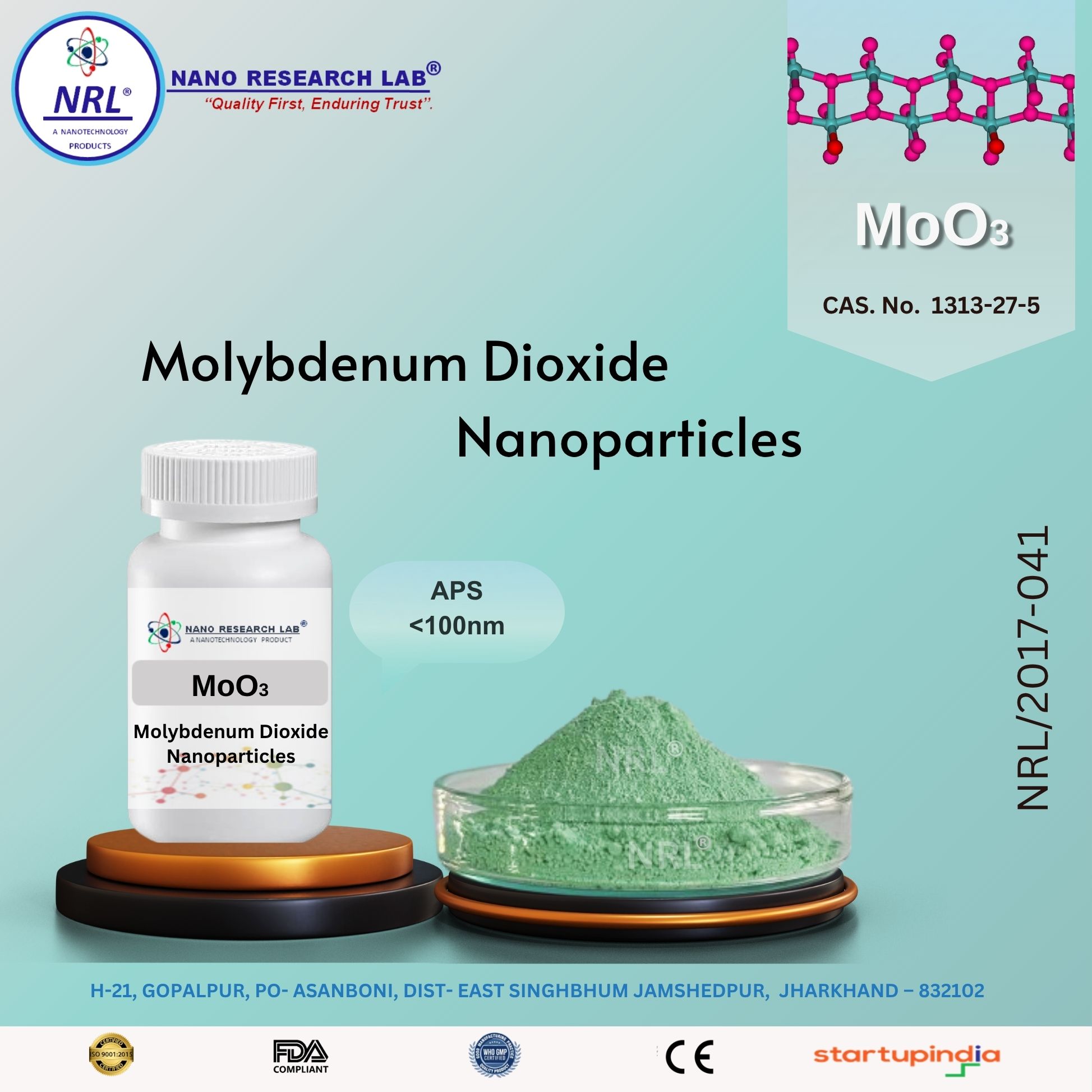
Molybdenum Dioxide MoO3 Nanopowder / Nanoparticles (<100nm,Purity 99.5%)
₹4490.00
Molybdenum Trioxide (MoO₃) Nanopowder / Nanoparticles (<100 nm, Purity 99.5%)
⚙️ Technical Specifications
Property | Specification |
|---|---|
Product Name | Molybdenum Trioxide Nanopowder / Nanoparticles |
Chemical Formula | MoO₃ |
Purity | ≥ 99.5% |
Particle Size | <100 nm |
Appearance | Pale yellow to light gray fine powder |
Crystal Structure | Orthorhombic |
Density | 4.69 g/cm³ |
Melting Point | ~795°C |
Solubility | Slightly soluble in water, soluble in alkalis and acids |
Morphology | Plate-like / layered nanoparticles |
CAS Number | 1313-27-5 |
🌟 Key Features
Ultra-fine nanopowder (<100 nm) with high purity (≥99.5%)
High surface area and reactivity
Excellent thermal and chemical stability
Layered structure enhances electrochemical and catalytic performance
Suitable for energy storage, catalysis, sensors, and electronics
Dispersible in solvents, polymers, and ceramic matrices
🔬 Applications (in Detail)
1. Catalysis
MoO₃ nanoparticles are widely used as catalysts or catalyst supports in oxidation and chemical synthesis reactions.
Applied in oxidation of hydrocarbons, methanol to formaldehyde, and other organic transformations.
Acts as a heterogeneous catalyst for industrial chemical processes.
2. Energy Storage & Conversion
Used as a cathode material in lithium-ion batteries and other energy storage devices.
Layered structure facilitates ion intercalation, improving battery capacity and cycling stability.
Applied in supercapacitors for fast charge–discharge cycles.
3. Sensors
High surface area and reactivity make MoO₃ nanoparticles suitable for gas sensors.
Detects gases such as NO₂, NH₃, CO, and H₂S.
Used in environmental monitoring and industrial safety systems.
4. Electronics & Photonics
Exhibits semiconducting and optical properties, useful in thin-film devices.
Applied in photodetectors, UV sensors, and electrochromic devices.
Can be incorporated into transparent conductive coatings.
5. Photocatalysis & Environmental Applications
Efficient photocatalyst for degradation of organic dyes and pollutants.
Can be combined with other semiconductors for enhanced solar-driven photocatalysis.
6. Ceramics & Composites
Incorporated into ceramic glazes, coatings, and composite materials.
Improves mechanical strength, thermal resistance, and electrical conductivity.
